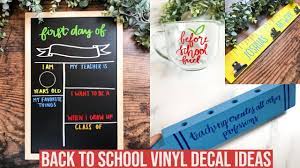
It’s that time of year again when the same old new year’s resolutions come out of hiding, and we promise ourselves that this year is going to be different. This year, I’m going to last more than two months at the gym. This year, we’ll save more money. This year, I’ll actually read those books instead of using them as makeshift paperweights. Right?!
Research has shown that 77% of New Year’s Resolutionists (yes, it’s a real word, look it up on Urban Dictionary) only lasted a mere week. Why? Well, it’s because most people create super long lists of unattainable goals and don’t create plans to achieve them. This, my friend, is where the Bullet Journal enters the picture.
Ever bought a planner and then used it for a total of 3 days? Maybe the calendar wasn’t set up to your liking, or there wasn’t enough space to write notes. Whatever the reason may be, a bullet journal solves many of these problems because it’s completely customizable.
A bullet journal is a scheduler, diary, project tracker, and creative outlet all rolled into one convenient notebook. According to Ryder Carroll, the inventor of the Bullet Journal, it is meant “to help you track the past, organize the present, and plan for the future”.
How to Get Started
Quite honestly, you really only need a notebook and a pen to get started. However, many people see these awesome organizers as a way to express their creativity, so don’t be afraid to get crafty with fountain pens, watercolor pens, stickers, or even Polaroids for a sketchbook look and feel.

Credit: nicole.josephine
For adding a little flair to your drawings, we humbly recommend our Watercolor Brush Pens for the most versatility. Whether you’re looking to create intricate line work or broad brush strokes, these will give you the artistic potential of paint with the convenience and portability of pens. Use alone for opaque color or add water and blend with the blending brushes for a realistic watercolor effect.

Choose a notebook with thick, high-quality ink-proof paper to avoid ink bleeding. Though it’s completely up to you, most bullet journalers prefer dotted grid paper for hassle-free spacing. A 5 x 8-inch notebook is the perfect place to start. Find one with a binding that allows it to lay flat when open. This will help you draw and write at any angle with ease.
Our favorite bullet journal notebooks:
The Bullet Journal System
While all bullet journals are notebooks, not all notebooks are bullet journals. Let’s go over the basic elements of this modular system!
Spread – A group of pages related to 1 topic. These tend to be two pages in length. The four main spreads are your Index, Future Log, Monthly Log, and Daily Log.
Index – Just like with any other book, the index serves to organize your spreads for easy reference later.
Future Log – A list of goals to complete within the next six months. You can also plan a future log to encompass the entire year. It’s totally up to you!
Monthly Log – A list of all the tasks you need to complete within that month and the desired timeframe for each task
Daily Log – A simple tracker for all the tasks, events, and notes for a particular day. Tasks are indicated by a solid bullet point, events are signified by an open circle, and notes are indicated by dashes. Place an asterisk next to very important items on your list to signify priority. This system for categorizing items is called rapid logging, which allows us to capture and organize information at light speed!

Source: fabercastell.com
Before you start, take a few minutes to reflect back on last year. What endeavors did you set out to accomplish, and what were the results? As you evaluate your goals for this year, make sure they’re realistic and give meaning to your life. What do you want your life to look like in 3 years? Plan to complete smaller achievements this year to guide you along the right path to accomplishing bigger goals in the future.
Once you’ve set up your Index and Future Log, begin your monthly and daily logs for January. There are dozens of Youtube videos that can show you exactly how to do this. Remember, bullet journals are meant to make your life simpler. No need to start with crazy illustrations now. Journaling is a process, and mistakes are OK. Like a fine wine, it gets better with time, so don’t sweat!
As you go through the month, draw over each completed bullet item with an X. Take a moment to review the outstanding tasks and ask yourself, “Is this still worth my time?”. If the answer is no, then cross it out. If it’s yes, then mark the bullet item with a right arrow and re-write the task into February’s monthly log. This is called migration. Repeat this process when setting up your logs for each new month.
Helpful Tips
Create spreads for your specific goals. Okay, so you’ve written your goals down on your future log. Now it’s time to put your money where your mouth is. Creating spreads for specific goals, such as weight loss or developing a new habit, allows you to track your progress over the course of the year and implement actionable changes when necessary.


Credit: @sojourn_al (top) @pacificnotation (bottom)
Don’t be afraid to get personal. As mentioned earlier in this post, bullet journals are not only planners but diaries. Create spreads that inspire you to be productive. Let your creativity really shine here!

Credit: diaryofajournalplanner.com
Number your pages! Number your pages and log them into your index. This will help you easily locate specific spreads in the future to reference progress or add updates.
Create your own color-coding system. It’s one of the BEST ways to organize your bullet journal further. Categorizing your journal items by color will make it easier to find things and plan for the future. Use different colors for events, appointments, activities pertaining to your kids, or whatever makes sense for your lifestyle. Keep it simple and stick with 6 or 7 generalized categories.


